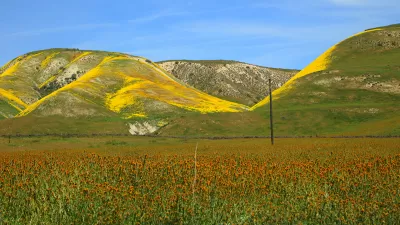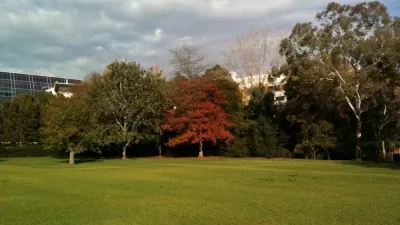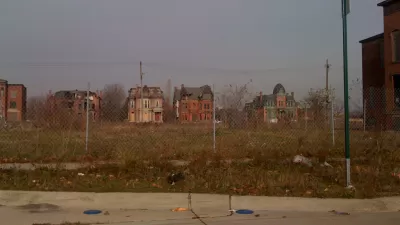Your senses (or lack thereof) aren't deceiving you. Some cities really are worse for seasonal allergies than others, and some of the reasons are entirely preventable.

Helen Lock starts this tale of seasonal allergy suffering with a particularly debilitating, even tragic, episode in Melbourne, Australia:
In 2016, Melbourne experienced a rare and extreme case of “thunderstorm asthma” that led to ten deaths and 8,500 people being admitted to hospital in one day. Ambulance dispatchers struggled to cope with 1,900 calls in the space of five hours, and one hospital ran out of Ventolin asthma inhalers. The storm had caused grass pollen to burst in the air, creating tiny particles that caused serious breathing problems when inhaled.
While allergy seasons like that have led some academics to declare the city the worst in the world for allergies, other cities have their own unique concoction of natural and human-designed factors that lead to seasonal suffering.
Meanwhile, in London, landscaping practices have led to an abundance of tree pollen, aggravating hay fever, according to a horticultural expert. Landscapers in the UK capital – and around the world – plant predominantly male trees because they are less messy than female trees, which shed seeds, fruits or pods, says Thomas Leo Ogren, creator of the Ogren Plant Allergy Scale. “The problem is that while these [male] trees and plants are litter-free, they all produce abundant allergenic pollen.”
Lock's tours Canberra, Tokyo, most of England, and the United States. Stateside, the Allergy and Asthma Foundation of America releases a report [pdf] that ranks cities by pollen counts. "In 2018, McAllen in Texas, Louisville in Kentucky and Jackson in Mississippi made the top of three of the organisation’s 'most challenging places to live with spring allergies' list," according to Lock.
FULL STORY: Which is the most hayfever-prone city – and is 'botanical sexism' to blame?

Manufactured Crisis: Losing the Nation’s Largest Source of Unsubsidized Affordable Housing
Manufactured housing communities have long been an affordable housing option for millions of people living in the U.S., but that affordability is disappearing rapidly. How did we get here?

Americans May Be Stuck — But Why?
Americans are moving a lot less than they once did, and that is a problem. While Yoni Applebaum, in his highly-publicized article Stuck, gets the reasons badly wrong, it's still important to ask: why are we moving so much less than before?

Using Old Oil and Gas Wells for Green Energy Storage
Penn State researchers have found that repurposing abandoned oil and gas wells for geothermal-assisted compressed-air energy storage can boost efficiency, reduce environmental risks, and support clean energy and job transitions.

Updating LA’s Tree Rules Could Bring More Shade to Underserved Neighborhoods
A new USC study finds that relaxing Los Angeles’ outdated tree planting guidelines could significantly expand urban tree canopy and reduce shade disparities in lower-income neighborhoods, though infrastructure investments are also needed.

California's Canal Solar Projects Aim to Conserve Resources and Expand Clean Energy
California’s Project Nexus has begun generating electricity from solar panels installed over irrigation canals, with researchers and state agencies exploring statewide expansion to conserve water and boost clean energy production.

HHS Staff Cuts Gut Energy Assistance Program
The full staff of a federal program that distributes heating and cooling assistance for low-income families was laid off, jeopardizing the program’s operations.
Urban Design for Planners 1: Software Tools
This six-course series explores essential urban design concepts using open source software and equips planners with the tools they need to participate fully in the urban design process.
Planning for Universal Design
Learn the tools for implementing Universal Design in planning regulations.
Heyer Gruel & Associates PA
City of Moreno Valley
Institute for Housing and Urban Development Studies (IHS)
City of Grandview
Harvard GSD Executive Education
Salt Lake City
NYU Wagner Graduate School of Public Service
City of Cambridge, Maryland




























